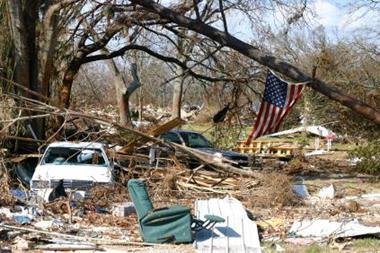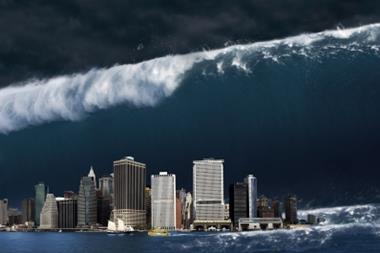The application of intellectual energy to the greatest puzzles, such as the origin of the universe, produces such imagination straining explanations as string theory
The application of intellectual energy to the greatest puzzles, such as the origin of the universe, produces such imagination straining explanations as string theory. String theory holds that tiny particles under tension, like guitar strings, are the basic unit of the universe. Theoretically, these strings should be about a millionth of a billionth of a billionth of a billionth of a centimetre, according to the Official String Theory web site.*
The unnamed authors of the site add helpfully, "Unfortunately, this means that strings are way too small to see by current or expected particle physics technology (or financing!) and so string theorists must devise more clever methods to test the theory than just looking for little strings in particle experiments."
So string theory uses immensely complex mathematics to extrapolate from what scientists can observe experimentally. In an analogous but more easily grasped fashion, bankers took something they knew about - home loans - and spun them off into increasingly complex derivative instruments based on models of how the contracts would behave. The experimental evidence is now pursuing the theory, as defaults on home loans in the United States trigger a chain reaction in financial institutions and economies.
Meanwhile, investors look for other homes for their funds. Securitised catastrophe risk is attractive, its proponents argue, because it offers an opportunity for out-performance that is not correlated with the now nervous financial markets. The observation that the US was almost untouched by landfalling hurricanes during 2007 and, this, reflected in insurers, and reinsurers, results, will add to their enthusiasm.
Convergence
The most sophisticated elements of the catastrophe reinsurance market, Bermudian and European reinsurers, say that the long predicted convergence of financial markets is taking place. Catastrophe bonds are but the visible particles of this process in which there is growing activity in the form of confidential two party contracts, for example derivative instruments that allow someone without an insurable interest to sell an element of catastrophe risk because the market price is attractive.
Such derivative markets support much of industry. Companies that depend on physical commodities like cocoa, copper or crude oil do not take a position once a year and wait to see whether prices move against them. They are active in secondary markets to hedge their positions all the time. Sometimes they do get it wrong, but on the whole it helps them to smooth their costs.
Financial provision for catastrophe risks has not had the luxury of that flexibility. Governments and supra-governmental organisations make funds available slowly and often reluctantly. Bermuda has prospered because it offered a setting in which investors could react comparatively rapidly to changes in pricing, but it remains tricky for sponsors to move on a year or two later when the rates are no longer so attractive. Hedging for catastrophe underwriters is also largely inflexible, tied as they generally are to annual contracts. The result has been upward lurches in pricing and downward in capacity when batches of contracts are renewed after a catastrophe.
Following the next capacity crisis in the United States, however, it may no longer be that capital flocks to new companies in Bermuda but instead constructs capacity through more flexible financial contracts. The development of a market in tradable instruments in catastrophe risks could attract the amount of capital that will be necessary to underpin the increasing cost of major events in the developed world and the growing number of insured risks in countries like China and India.
So far, few such contracts are visible. We do not know how they will behave in the event of a major catastrophe. Like sub-atomic particles, they may only be traced through movement, and that is the risk. As they develop, we will need to know how dependent we are for recovery after a catastrophe on contracts created, like string theory, through the exercise of intellectual energy, and like sub-prime mortgage derivatives, a desire to make money. It is a volatile combination.
Websites
Postscript
*www.superstringtheory.com




















No comments yet